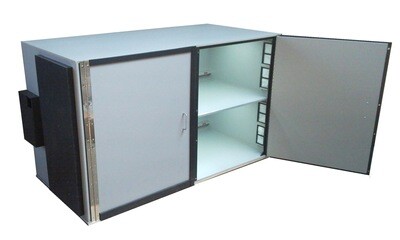
Actimetrics
Actimetrics makes automated systems for animal behavioral testing. We emphasize ease of use and the application of modern signal and image processing techniques to current problems in neuroscience. We work closely with our users to make each system a natural extension of the experiment itself. Dozens of features designed for high throughput data collection and analysis benefit large and small users alike.
Products
ClockLab
The most sophisticated and easy- to-use system available for data collection and analysis for Circadian Biology.
FreezeFrame
A video-based, 4-channel system for the Conditioned Fear Test that rivals the human observer in sensitivity. The FreezeFrame system now includes a module for precise video analysis of learned helplessness (tail suspension) experiments. Up to 4 animals can be recorded at once. Hardware and test cages
WaterMaze
A unique, video-based tracking system for the Morris Water Maze, designed in collaboration with Dr. Richard Morris. Automates the design and execution of experiments with multiple animals and platforms. Extensive analysis suite with batch processing.
LimeLight
1- or 4-channel video tracking system for Open Field, Plus Maze, Radial Arm Maze, Zero Maze, Porsolt Swim Test and Novel Object Recognition. Designed for high throughput, with unique batch analysis capabilities. NEW: LimeLight 2 supports larger images, AVI image files and an enhanced behavior scoring interface.
Big Brother
Multi-animal, video-based activity monitoring and tracking for behavioral testing, neuropharmacology and circadian biology. Track over 100 animals at a time using up to 4 cameras.
LumiCycle
LumiCycle performs high-throughput luminometry on self-luminous tissues, such as those from transgenic animals containing the luciferase gene.
MultiCycle
MultiCycle can read text-formatted data from any multi-well plate reader, including Tecan, ViewLux and Envision (Perkin Elmer), Synergy (Biotek), and LEADseeker (GE). The program calculates period, phase, amplitude, and damping for each well in a multi-plate trial and exports the parameters in spreadsheet form. Wells can be grouped into experimental and control groups for comparison. With flexible graphical displays (below), differences between control and experimental groups can be readily seen, and unusual samples immediately pop out.
Cell Cycle
It is now possible to measure luminescence of single PER-LUC labeled cells using cooled CCD cameras. With their high quantum efficiency and low noise, the cameras can extract significant measurements of luminance from the handful of numbers of photons emitted by single cells. Analyzing the image series from such experiments can laborious, however. Each of the many cells must be identified and then tracked through the image series, a difficult prospect given that the cells can move from image to image, and — during the dim phase of the circadian day — can completely disappear from view. Cell Cycle facilitates the image analysis.
About Actimetrics
Actimetrics was formed in 1998 by academic neuroscientists with years of experience at designing laboratory software.
Our goal is to create tools for the study of animal behavior that integrate seamlessly with the experiment. By working directly with many different behavioral scientists, we have designed our systems around the experiments that are currently driving the field, and have tailored the features of each program to current lab practices. In addition, Actimetrics has pioneered a number of new analysis methods for behavioral experiments. The result has been a suite of easy-to-use programs that facilitate high-throughput testing, and yet are flexible enough to accommodate new experimental designs.
Many of our systems are now used in large scale mutagenesis screens or drug tests. And our users have given us excellent feedback, telling us that our systems have increased the rate and accuracy with which they can do experiments, or that Actimetrics software allows them to perform new experiments that they otherwise could not have done.
At Actimetrics, we design the software around the experiment, rather than forcing the user to design experiments around the software. We have found that general-purpose tracking software that tries to accommodate too many different tests can become inflexible and cumbersome. The tools needed to manage a water-maze experiment differ sharply from those used in open field testing; and the analyses needed for tail suspension differ from those used in object recognition. So we have built individual applications around small numbers of closely related experiments, incorporating dozens of features that streamline the performance and analysis of just those experiments. These applications are easy to learn, easy for students and technicians to learn, a pleasure to use, and yet extremely powerful and adaptable. We offer these systems at affordable prices, so that labs can pick and choose the combination of programs that best suit their needs.
Another unique aspect of our approach is our explicit partnership with our users. We are continually updating our software based on your new ideas and feature requests, often within a few days. And we never charge for “custom” work, because we benefit as much or more from your ideas as you do from the new features that result. Our programs would not be what they are without this close interaction with users.
